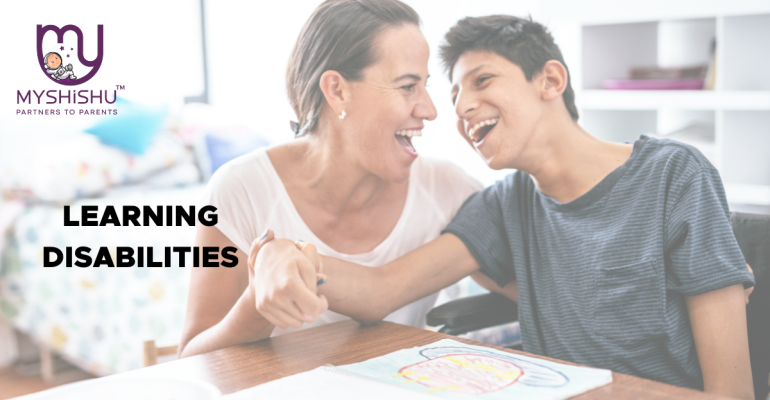Parenting A Child With Learning Disabilities: A Guide
Parenting A Child With Learning Disabilities: A Guide
Parenting a child with learning disabilities presents unique challenges and requires patience, understanding, and support. In this comprehensive guide, we explore the experiences of parenting a child with learning disabilities, offering insights, strategies, and resources to empower both parents and their children. From understanding learning disabilities to navigating diagnosis and assessment, supporting educational needs, creating a supportive home environment, promoting self-advocacy and independence, and addressing emotional challenges, this guide provides valuable information for parents on this journey. By advocating for their child’s needs and prioritizing self-care, parents can navigate this journey with confidence and resilience.
Introduction
Parenting is a journey filled with love, joy, and challenges, but when your child faces learning disabilities, the path may seem more daunting. In this guide, we’ll delve into the unique experiences of parenting a child with learning disabilities, offering insights, strategies, and resources to empower both parents and their children. From understanding the nature of learning disabilities to navigating diagnosis, supporting educational needs, and fostering self-advocacy and independence, this guide aims to provide parents with the tools and knowledge they need to navigate this journey with confidence and resilience.
Table of Contents
What is Parenting a child with learning disabilities?
Parenting a child with learning disabilities involves navigating unique challenges with patience, understanding, and advocacy. It requires a tailored approach that recognizes and supports the individual needs of the child. Parents often find themselves balancing emotional support with practical interventions, such as specialized education plans and therapy sessions. Communication becomes paramount, both with the child to foster self-esteem and independence, and with educators and healthcare professionals to ensure the best support system is in place. Patience is key, as progress may be gradual, and setbacks are common.
Additionally, advocating for the child’s rights within educational and social settings is crucial to ensure they receive appropriate accommodations and opportunities. While the journey may be challenging, parenting a child with learning disabilities can also be incredibly rewarding, fostering resilience, empathy, and a deep bond between parent and child.
What causes a child with learning disabilities?
Learning disabilities can stem from various factors, including genetic predispositions, neurological differences, prenatal influences, and environmental factors. Genetic factors play a significant role, as learning disabilities often run in families, indicating a hereditary component. Neurological differences in brain structure or function can also contribute, to affecting how a child processes information and learns new skills. Prenatal influences, such as exposure to toxins or maternal health conditions during pregnancy, can impact brain development, potentially leading to learning difficulties.
Additionally, environmental factors such as early childhood experiences, exposure to trauma, or a lack of access to quality education and resources can exacerbate or contribute to learning disabilities. It’s essential to recognize that learning disabilities are complex and multifaceted, often resulting from a combination of genetic, neurological, prenatal, and environmental factors. Understanding these causes can inform interventions and support strategies to assist children with learning disabilities in reaching their full potential.
How do I know if my child has learning differences and difficulties?
Recognizing learning differences and difficulties in children involves observing various signs across different areas of development. Some common indicators include:
Preschool Children:
- Speech and Language Development: Difficulty in articulating words, limited vocabulary, or delayed language milestones compared to peers.
- Motor Skills: Struggles with basic motor skills like holding a pencil, tying shoelaces, or using scissors.
- Social Interaction: Difficulty engaging with peers, understanding social cues, or playing cooperatively.
- Attention Span: short attention span, frequent distractions, or difficulty following simple instructions.
- Early Academic Skills: Trouble recognizing letters, numbers, colors, or shapes, and difficulty with pre-reading and pre-writing activities.
School-Aged Children and Teens:
- Academic Performance: persistent academic struggles despite effort, including difficulty in reading comprehension, writing, or solving math problems.
- Organization and Time Management: Challenges in staying organized, managing time effectively, or completing homework assignments.
- Attention and Focus: Difficulty sustaining attention in class, being easily distracted, or frequently losing track of tasks.
- Memory and Retention: Forgetting instructions, having difficulty retaining information learned in class, or struggling with recalling details.
- Social and Emotional Well-being: Difficulty making friends, understanding social dynamics, or experiencing emotional issues like anxiety or low self-esteem related to academic challenges.
- Behavioral Concerns: acting out in frustration, avoidance of tasks perceived as challenging, or exhibiting disruptive behavior in class.
- Special Interests or Strengths: Showing exceptional abilities or interests in specific areas, such as art, music, or technology, can sometimes mask underlying difficulties.
For both age groups, consistent patterns of these difficulties, along with observations from parents, teachers, and caregivers, warrant further evaluation by professionals trained in assessing and supporting children with learning differences and difficulties.

Is there a cure for learning disabilities?
Learning disabilities are neurodevelopmental conditions that typically persist throughout a person’s life. While there is no “cure” for learning disabilities in the traditional sense, there are numerous strategies, interventions, and accommodations that can help individuals manage their challenges effectively and achieve success in various aspects of life. These may include:
- Educational Interventions: Tailored educational approaches such as specialized instruction, individualized education plans (IEPs), and accommodations like extended time on tests or modified assignments.
- Therapeutic Support: Access to speech therapy, occupational therapy, or other forms of specialized therapy to address specific areas of difficulty, such as language processing or motor skills.
- Assistive Technology: Utilization of tools and devices like text-to-speech software, graphic organizers, or audiobooks to support learning and compensate for areas of weakness.
- Psychosocial Support: Counseling or therapy to address emotional challenges, build resilience, and develop coping strategies for managing stress related to learning disabilities.
- Parental and Educator Involvement: Collaboration between parents, educators, and healthcare professionals to create supportive environments and implement effective interventions tailored to the individual’s needs.
While learning disabilities cannot be cured, early identification, appropriate interventions, and ongoing support can significantly mitigate their impact, allowing individuals to thrive academically, socially, and emotionally. The focus shifts from seeking a cure to providing comprehensive support that empowers individuals to maximize their strengths and overcome challenges associated with their learning differences.
Who can help?
Individuals with learning disabilities can receive support from various professionals and networks to navigate their challenges effectively. Educators, including special education teachers and school counselors, offer tailored instruction and accommodations within the educational environment.
Healthcare providers, such as pediatricians and psychologists, conduct assessments, provide guidance on interventions, and monitor overall well-being. Therapists, including speech-language pathologists and occupational therapists, deliver specialized therapy to address specific difficulties such as language, motor skills, or behavior. Support organizations, advocacy groups, and community resources offer information, support groups, and services to individuals and their families.
Additionally, parents and caregivers play a crucial role in advocating for their loved ones, providing emotional support, and collaborating with educators and healthcare professionals. By accessing the expertise and resources available from these professionals and support networks, individuals with learning disabilities can receive the guidance and interventions necessary to thrive academically, socially, and emotionally.
4 ways parents can help children who learn and think differently
Parents can play a crucial role in supporting children who learn and think differently by implementing various strategies tailored to their unique needs.
- Advocate for Support Services: Parents can actively advocate for their child within educational settings by collaborating with teachers, administrators, and specialists to develop individualized education plans (IEPs) or 504 plans. These plans can outline specific accommodations, interventions, and support services, such as extended time on tests, preferential seating, or access to specialized instruction.
- Foster a Positive Home Environment: Creating a supportive and nurturing home environment is essential for children with learning differences. Parents can encourage open communication, celebrate their children’s strengths and accomplishments, and provide opportunities for them to explore their interests and passions. By fostering a sense of acceptance and resilience, parents can help their children develop confidence and self-esteem.
- Utilize Learning Tools and Resources: Parents can leverage various learning tools and resources to support their child’s learning and academic progress. This may include using assistive technology such as speech-to-text software, audiobooks, or educational apps tailored to their child’s needs. Additionally, providing access to tutoring, educational games, or online resources can supplement classroom learning and reinforce key concepts.
- Promote Self-Advocacy Skills: Teaching children to advocate for themselves is essential for building independence and self-confidence. Parents can empower their children to understand their learning differences, articulate their needs, and seek support when necessary. Encouraging self-awareness, problem-solving skills, and effective communication can help children navigate challenges and advocate for their success in academic and social settings.
By implementing these strategies, parents can create a supportive environment where children who learn and think differently feel empowered, valued, and equipped to achieve their full potential.
Additional common questions (FAQs)
-
How parents can help children with learning disabilities?
Ask your child to list their strengths and weaknesses and talk about your strengths and weaknesses with your child. Encourage your child to talk to adults with learning disabilities and to ask about their challenges, as well as their strengths. Work with your child on activities that are within their capabilities.
-
How do I teach my child with a learning disability?
Strategies For Teaching Children With Learning Disabilities
1. Use Chunking Technique.
2. Organize Information Visually.
3. Appeal to Multiple Senses.
4. Personalize Online Tutoring.
5. Incorporate Mnemonics. -
How a good teacher will treat a child with some learning disability?
A good and effective language teacher should treat a child with a learning disability by motivating the student to learn and by paying personalized attention as by doing so the teacher can: become more vigilant towards the child. better relate to the child’s unacceptable behavior.
-
What activities are good for students with learning disabilities?
Going to music, dance, art, or drama classes can also help teach a person with learning disabilities how to interact with others and how to follow instructions. Communicating with others can sometimes be difficult for someone with a learning disability, and can lead to frustration.
-
What causes learning disabilities?
No one knows what causes a learning disability. Often, learning problems can run in families (genetic), but environmental factors can play a role too. Mostly, learning disabilities occur because there is an enormous range of variation that occurs normally in people’s cognitive strengths and weaknesses.
Conclusion
In conclusion, parents play a pivotal role in supporting children who learn and think differently by advocating for their needs, fostering a positive home environment, utilizing appropriate learning tools, and promoting self-advocacy skills. By collaborating with educators and specialists, creating a nurturing atmosphere, providing access to resources, and empowering their children to advocate for themselves, parents can help cultivate confidence, resilience, and academic success. Through their unwavering support and guidance, parents contribute significantly to the holistic development and well-being of their children with learning differences, ultimately enabling them to thrive and reach their fullest potential in both academic and life pursuits.











